Implementing IPM
EPA’s guidance on how to start a School IPM Program
Oklahoma State Step by Step School IPM Plan
University of Florida Implementation of School IPM
EPA how to get started with School IPM
Information for School Administrators
Monitoring
Monitoring is key to an IPM program in order to determine what pests are present and their locations in the facilities. The use of sticky traps serve as 24/7 monitoring approach that will provide the pest management professional and the school's IPM coordinator information about pest type, location and population levels to allow for appropriate management approaches that may include sanitation and exclusion recommendations or the use of other management tools.
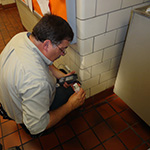
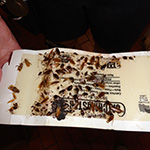
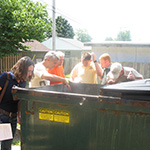
Monitoring is a key aspect of an IPM program
Large pest populations may seem impossible to control but can be managed with an IPM program
Keeping accurate records of pest trends is vital in order to manage their populations.
Inspections
Trained pest professionals do regular inspections in order to monitor and record data of pest populations. Pest professionals look for trends in the pest population of a particular institution and determine the best way to combat those problem areas. Thorough inspections are a vital aspect of an IPM program in order to properly identify the pest and problem areas in order to determine the best management approach.
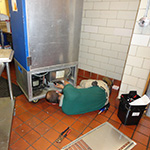
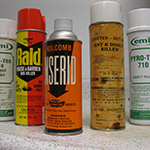
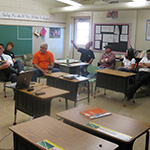
Pest professionals get dirty trying to find the pest’s harborage
Regular pesticide spraying rarely solves a pest problem and can endanger students and staff. In addition, Illinois law prohibits the use of pesticides in schools unless you are a certified applicator.
Educating school staff is a key part of a school IPM program
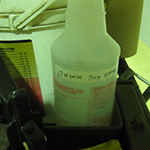
There are many solutions to pest problems other than pesticides
Conducive Conditions
Dirt, grime, moisture, clutter and food: All provide conducive conditions for pests that attract pests. Dirt and grime is often a sign that an area has been undisturbed for some time, this lack of sanitation and activity in these areas give pests a place to call home. Leaky pipes provide an excellent water source for pests and these leaky pipes often go unnoticed allowing pests to thrive. An available food supply is a vital aspect to a pest population. Food sources as small as bread crumbs can sustain a pest population and allow those pests to take over a kitchen. By removing conducive conditions for pests, you reduce or eliminate the pest problem.
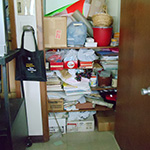
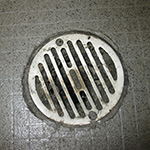
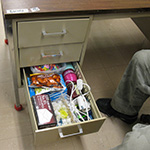
Clutter gives pests an excellent place to live and breed
Drains provide excellent harborage for pests such as cockroaches and drain flies
Storing food in classrooms can attract pests.
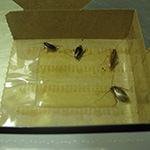
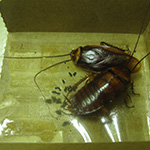
German cockroach
American cockroach
Sanitation
Cleanliness is a major aspect of society today; it is also a major factor in a healthy IPM program and for a healthy environment throughout a school or institution. Pests are attracted to food debris and grease because they provide a food source and are often are a sign of little disturbance. Thorough cleaning and removal of food debris eliminates a pest’s source of food and the removal of clutter eliminates harborage for the pest. It is vital to maintain a clean building in order to reduce pest populations.
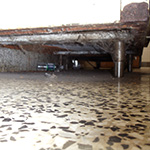
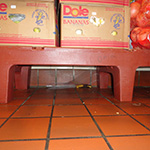
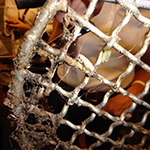
Pests thrive in unclean areas
Left behind fruit can open the door for a fruit fly invasion
Cleaning drains regularly can reduce pest problems
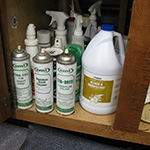
Make sure to READ THE LABEL
Exclusion
If you can see light under s doorway a cockroach can enter the building and if you can stick a No. 2 pencil in an opening a mouse can enter. Devices such as door sweeps are used to eliminate entry points for pests to come through. Filling in cracks with caulk prevents entry points as well and eliminates the pest’s access to the building.
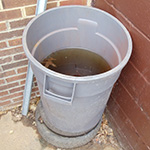

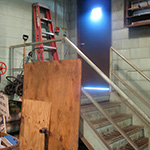
Stagnant water is an excellent place for mosquitoes and other pests to develop.
Keeping dumpsters covered and at least 30 ft. away from the building can exclude pests from entering the building
Many pests can enter buildings through gaps in the door way and can be excluded by using a door sweep
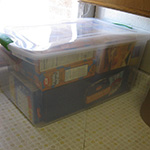
Storing food in plastic containers can help reduce pest problems









